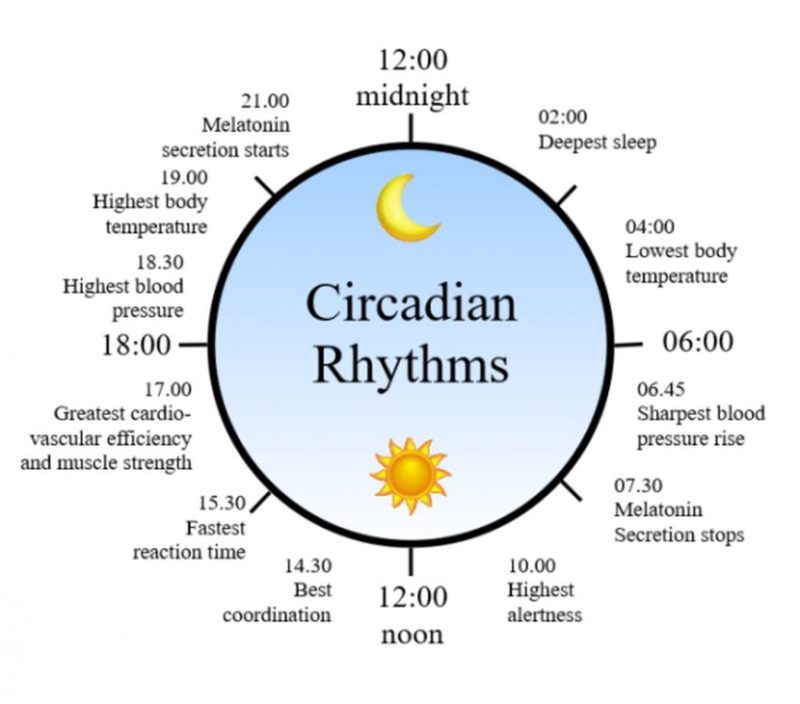If you walked into a room of 100 people, chances are anywhere from 30 to 70 of them will have slept terribly the previous night. Or even the night before that…and the two nights before that.
Professionals have analyzed the sleep epidemic on several different levels and come to many conclusions regarding things from diet to electronic use. But in your frantic google searches, have you (and your coffee) seen anything talking about body temperature?
The Circadian Rhythm-More than Just Light Exposure
Right now, without glancing at your clock, you could probably tell me it’s midafternoon, or early morning, or evening…the list goes on. The circadian rhythm is what helps give you this estimate.

Things the circadian rhythm does include:
- Utilizing daylight
- Keep up an internal clock
- help you fall asleep
- regulate your body temperature throughout the day
In the wake of booming technology, the last one is rarely discussed. The average body temperature is 98.6 degrees Fahrenheit or 37 degrees Celsius. and having it too high or too low is considered a sign of sickness. Because of this, the fact that it rises and falls throughout the day is rarely mentioned.
Your body temperature rises in the morning and falls around late afternoon. The variance is typically 1-2 degrees (Fahrenheit) or .9 degrees (Celsius). This, added to light, helps the body know that it’s time to sleep.
Blue light may also affect your internal temperature as well. It’s been established that blue light throws off the circadian rhythm.
Imagine you’ve been working at your office for most of the day. The computer is forcing your eyes open. Does your face feel hot and feverish? I have experienced this many times but haven’t thought of the potential relationship until recently.
The same feverish feeling may also arise from a long movie or a video game all nighter. You may not quite know what I mean right this second (or maybe you do) but think about it next time you’re at your screen.
Why Is It Important To Know?

When you were in elementary school, did your teacher drill the cause and effect relationship into you (mine did)? At the time, I was bored of hearing about it, but now I’ve had a lot of use for it. Right now, it’s perfect.
The cause in this case is an elevated temperature, caused by anything from blue light, to spending a lot of time in a sauna. The effect? It can be hard to fall asleep. But why?
Most people are more comfortable in warmer weather, so wouldn’t that be most comfortable to sleep in? Not necessarily. For REM sleep to occur, the body temperature has to drop at least 1 degree (Fahrenheit) or .5 degrees (Celsius).
Rem sleep:
- Stands for Rapid Eye movement
- Is the fourth and final sleep stage
- Is the deepest sleep in the sleep cycle
- Is where dreaming occurs.
- Turns off body temperature regulation
That last one isn’t nearly as scary as it sounds. REM doesn’t last long enough for it to harm the body.
The body temperature during REM sleep is usually two degrees (Fahrenheit) or .9 degrees (Celsius) lower than the average. This helps the body to stay in REM sleep and provide a restful night. But what do you do if you just can’t seem to get it right? What happens when you wake up in the middle of the night drenched in sweat and unable to fall asleep? If this is you, there are gadgets to try out. Things like this bed sleep temperature-system, chiliPAD can help by regulating the temperature of your bed to keep you cool. You can read the article from SmartifyLife for an in-depth review of chiliPAD sleep system.
How Bad can It Get?

Like many other ailments, insomnia is seeing rise in diagnoses, in part because of updated medical practices.
30% of Adults in America suffer from symptoms of insomnia with 10% of the population face daily repercussions. These numbers double in the United kingdom with 67% having symptoms and 23% have it affecting their daily life.
Both sleep onset insomnia (trouble falling asleep) and morning awakening insomnia (waking up in the middle of the night or extremely early in the morning) have been linked to trouble in body temperature regulation.
In many cases of insomnia, the body has trouble cooling down or keeping warm. If the body hasn’t cooled down, it cannot enter REM sleep. On the flip side, if the body cools down past the sweet spot required, it will abruptly wake up.
In conclusion…

When most professionals talk about sleep issues, they automatically jump to technology, and they are right to do so. Yet, they often forget to mention that body temperature is an important piece in achieving REM sleep. If you want to learn more about this topic feel free to visit this website.


